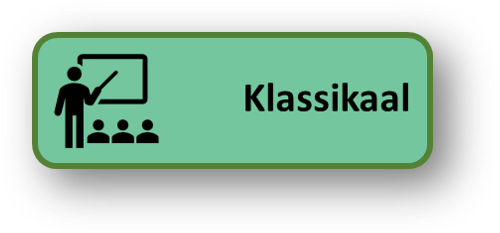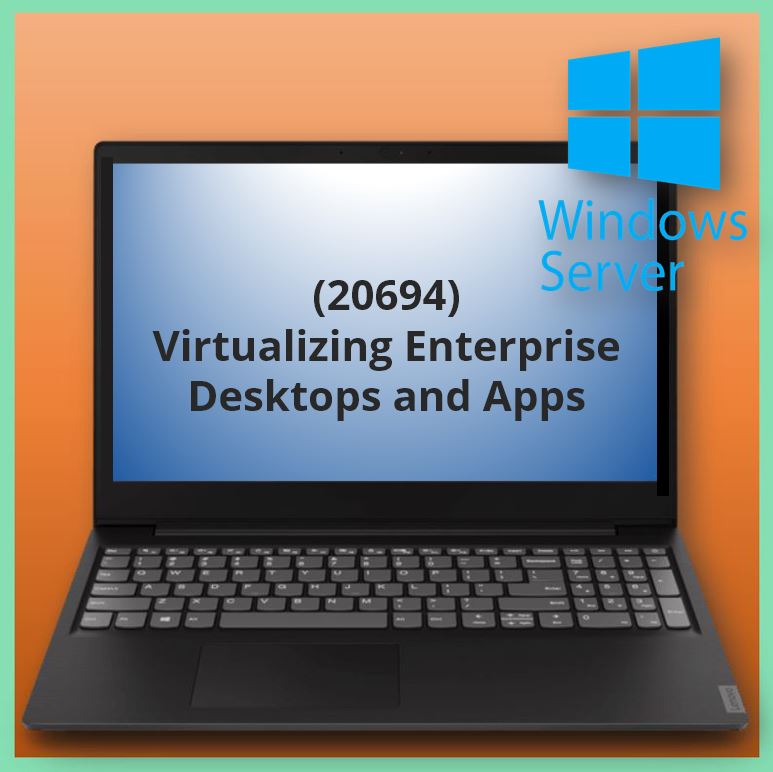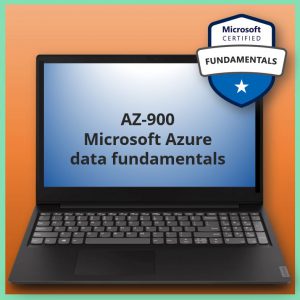Aangeboden leervormen


Virtualizing Enterprise Desktops and Apps (20694)
This course is designed to teach you the breadth of Microsoft virtual desktop technology, and the course will compare and contrast the various technologies with use cases and best practices. This course builds your skills in Microsoft Application Virtualization (App-V) Service Pack 2 (SP2), Microsoft User Experience Virtualization (UE-V), and Virtual Desktop Infrastructure (VDI) as part of Windows Server 2012 R2. Throughout this course, you will learn how to manage, monitor, support, and troubleshoot various Windows-based desktop virtualization solutions.
At Course Completion
After completing this course, students will be able to:
· Describe desktop and application virtualization.
· Plan and implement user state virtualization.
· Plan and implement App-V.
· Plan and deploy App-V clients.
· Manage and administer application virtualization.
· Understand application sequencing.
· Configure client Hyper-V.
· Plan and deploy session-based desktops.
· Publish and configure RemoteApp programs.
· Plan pooled personal desktops.
· Plan and implement pooled and personal desktops.
· Implement Remote Access.
· Understand health monitoring of VDI infrastructure.
Voor wie
This course is intended for the IT administrators, and implementers, of large and midsized organizations who want to understand and get hands on experience with the latest Microsoft desktop and application virtualization technologies and how to plan, implement, and manage virtual infrastructure solutions based on these technologies.
Programma
Module 1: Overview of Desktop and Application Virtualization
This module explains virtualization technologies that they can use to meet the needs of your organization. Which technologies are relevant to their organization will vary with their needs. To use these virtualization technologies properly in the student’s organization, they’ll need to understand which technologies are available and when to use them.
Lessons
· Overview of Virtualization Technologies
· Usage Scenarios for Virtualization
· Considerations for Implementing Virtualization
Lab : Overview of Desktop and Application Virtualization
· Identifying Virtualization Technologies to Meet Business Needs
After completing this module, students will be able to:
· Understand virtualization technologies.
· Understand usage scenario for virtualization.
· Describe considerations for implementing virtualization.
Module 2: Planning and Implementing User State Virtualization
This module explains user state virtualization, and which technologies are part of it and what are benefits of user state virtualization. They will also be able to plan and implement user state virtualization technologies.
Lessons
· Understanding and Planning for User State Virtualization
· Configuring Roaming User Profiles and Folder Redirection
· Configuring UE-V
Lab : Planning and Implementing User State Virtualization
· Planning User State Virtualization
· Configuring Roaming User Profiles and Folder Redirection
· Implementing and Configuring UE-V
After completing this module, students will be able to:
· Understand and plan for user state virtualization.
· Configure roaming user profiles and folder redirection.
· Configure UE-V.
Module 3: Planning and Implementing App-V
This module explains application virtualization and describes App-V components. This module also describes App-V infrastructure, deployment scenarios, and procedures for installing and configuring Microsoft Server Application Virtualization agents (App-V agents).
Lessons
· Overview of Application Virtualization
· App-V Architecture
· Planning App-V Infrastructure
· Deploying App-V Infrastructure
Lab : App-V Introduction and Architecture
· Examining Application Virtualization Packages
· Examining Standard Application Installations
· Examining Virtualized Application Installations
Lab : Planning and Implementing App-V
· Planning the Deployment of App-V
· Deploying App-V Infrastructure
After completing this module, students will be able to:
· Understand application virtualization.
· Understand App-V Architecture.
· Plan App-V infrastructure.
· Deploy App-V infrastructure.
Module 4: Managing and Administering Application Virtualization
This module explains the App-V console and explains how to control administrative access, and describes the functionality and administrative functions that the console provides. This lesson also explains how to manage connection groups, and how to publish applications into the virtualized environment.
Lessons
· Managing and Administering Application Virtualization
· Modifying Published Application and Configuration Upgrades
· App-V Reporting
Lab : Managing and Administering Application Virtualization
· Configuring a New Application and Connection Group
· Configuring App-V Reporting on the Client
· Creating a Report for App-V
After completing this module, students will be able to:
· Manage and administer application virtualization.
· Modify published application and configuration upgrades.
· Understand App-V reporting.
Module 5: Planning and Deploying App-V Clients
This module explains the recommendations for deploying and managing the App-V Client. This module also provides students with an overview of the App-V Desktop Client, App-V Remote Desktop Client, and the several installation methods for each.
Lessons
· Overview of App-V Client
· Installing and Configuring the App-V Client
· Managing App-V Client Properties
Lab : Planning and Deploying App-V Clients
· Planning the Deployment of App-V Clients
· Installing and Testing the App-V Client
· Configuring the App-V Client
· Configuring App-V Client by Using Group Policy
After completing this module, students will be able to:
· Understand the App-V Client.
· Install and configure the App-V Client.
· Manage App-V Client Properties.
Module 6: Application Sequencing
This module explains how to install and configure the App-V Sequencer to create application packages.
Lessons
· Overview of Application Sequencing
· Planning for Application Sequencing
· Sequencing an Application
· Advanced Application Sequencing
Lab : Application Sequencing
· Installing App-V Sequencer
· Deploying the sequenced application
· Updating a Sequenced Application
· Publish Office 2013 and Sequencing Add-On for Word 2013
· Deploying a connected application
After completing this module, students will be able to:
· Understand application sequencing.
· Plan for application sequencing.
· Sequence an application.
· Understand application sequencing.
Module 7: Configuring Client Hyper-V
This module explains Client Hyper-V in Windows 8.1 and explain the fundamentals of working with virtual machines in a Client Hyper-V environment. You should be aware that all the features that are covered in this module are also available in Hyper-V on Windows Server 2012 R2.
Lessons
· Overview of Client Hyper-V
· Creating Virtual Machines
· Managing Virtual Hard Disks
· Managing Checkpoints
Lab : Configuring Client Hyper-V
· Installing and Configuring Client Hyper-V
· Creating Virtual Switches, Virtual Hard Disks, and Virtual Machines
· Managing Virtual Machines
After completing this module, students will be able to:
· Understand Client Hyper-V.
· Create virtual machines.
· Manage virtual hard disks.
· Manage checkpoints.
Module 8: Planning and Deploying Session-Based Desktops
This module explains how to plan for session-based desktop deployment of Remote Desktop Services (RDS). They will also learn to perform session-based desktop deployment.
Lessons
· Overview of Remote Desktop Services
· Planning Infrastructure for Session-Based Desktops
· Deploying Session-Based Desktops
· RDS High Availability
Lab : Planning and Deploying Session-Based Desktops
· Planning the Session Based Desktop Deployment
· Performing Session-Based Desktop Deployment
· Configuring Session Collection Settings and Using a Remote Desktop Connection
· Implementing RD Connection Broker High Availability
After completing this module, students will be able to:
· Understand RDS.
· Plan infrastructure for session-based desktops.
· Deploy session-based desktops.
· RDS high availability.
Module 9: Configuring and Managing RemoteApp Programs
This module explains how to publish and work with RemoteApp programs.
Lessons
· Publishing and Configuring RemoteApp Programs
· Working With RemoteApp Programs
Lab : Configuring and Managing RemoteApp Programs
· Publishing RemoteApp Programs
· Accessing Published RemoteApp Programs
· Synchronizing Settings between Locally Installed and RemoteApp Programs
After completing this module, students will be able to:
· Publish and configure RemoteApp programs.
· Work with RemoteApp programs.
Module 10: Planning Personal and Pooled Desktops
This module explains how to plan the implementation of pooled and personal desktops.
Lessons
· Overview of Personal and Pooled Desktops
· Planning and Optimizing Desktop Templates
Lab : Planning Pooled and Personal Desktops
· Plan the Implementation and Optimization of Virtual Desktop Templates
· Configure a Virtual Desktop Template
After completing this module, students will be able to:
· Understand personal and pooled desktops.
· Plan and optimize desktop templates.
Module 11: Planning and Implementing Infrastructure for Pooled and Personal Desktops
This module explains how to implement and manage pooled and personal desktops.
Lessons
· Planning Storage for Personal and Pooled Desktops
· Capacity Planning for Pooled and Personal Desktops
· Implementing Pooled and Personal Desktops
· Implementing RemoteApp for Hyper-V
Lab : Planning and Implementing Infrastructure for Pooled and Personal
· Plan the implementation of pooled and personal desktops
· Deploying an RD Virtualization Host
· Implementing Pooled Desktops
· Implementing Personal Desktops
After completing this module, students will be able to:
· Plan storage for personal and pooled desktops.
· Understand capacity planning for pooled and personal desktops.
· Implement pooled and personal desktops.
· Implementing RemoteApp for Hyper-V.
Module 12: Implementing Remote Access for VDI
This module explains how to implement remote access and high availability for VDI.
Lessons
· Extending VDI Outside the Organization
· Controlling RD Gateway Access
Lab : Implementing Remote Access for VDI
· Implementing remote access for VDI
After completing this module, students will be able to:
· Extend VDI outside the organization.
· Control RD Gateway access.
Module 13: Performance and Health Monitoring of VDI Infrastructure
This module explains how to monitor the performance of virtual desktop infrastructure to ensure performance.
Lessons
· Overview of Monitoring Desktop and Application Virtualization
· Monitoring Desktop Virtualization Infrastructure
Lab : Performance and Health Monitoring of VDI Infrastructure
· Configure Operation Manager to Monitor VDI
· Configure monitoring by using Operation Manager
After completing this module, students will be able to:
· Understand desktop monitoring and application virtualization.
· Monitor desktop virtualization infrastructure.
Voorkennis
Before attending this course, students must have:
• Experience with day-to-day Windows Server 2008 or Windows Server 2008 R2 system administration management and maintenance tasks in an Enterprise environment
• Obtained the credential Microsoft Certified Solutions Associate (MCSA) Windows Server 2008 or have equivalent knowledge
Before attending this course, students must have a system administrator–level working knowledge of:
• Networking fundamentals, including Transmission Control Protocol /Internet Protocol (TCP/IP), User Datagram Protocol (UDP), and Domain Name System (DNS).
• Active Directory Domain Services (AD DS) principles and fundamentals of AD DS management.
• Installation, configuration, and troubleshooting for Windows-based personal computers.
• Basic understanding of scripting and Windows PowerShell syntax.
• Desired: Basic understanding of Windows Server roles and services.
Examen
Duur training
Klassikaal: 4 dagen
Open leercentrum: 5 dagen








